Wednesday, August 22nd 2018

Games With NVIDIA RTX, Part 1: Battlefield V, Control
At NVIDIA's event at Koln, Germany, NVIDIA's Mark Smith took the lid of some of NVIDIA's game developing partners that are working on breinging RTX's improvements to gamers' systems. The presentation started with Christian Holmquist and Jonas Gammelholm, both with DICE, going through the graphical improvements enabled on Battlefield V through the usage of RTX.
Reflections of tank's muzzle flashes in character's eyes, reflected flames and smoke in water bodies, perfect ray tracing on reflective surfaces even with off-screen sources of lighting, static cube maps are replaced with actual transparent, reflective surfaces... And these effects are relevant even in gameplay; these aren't some screenshot-only, squinting-effort effects. You can immerse yourself in them even in the fast-paced combat of Battlefield V.Remedy's Control was also showcased with its RTX implementation, starting with the E3 trailer we've seen as a showcase of the game running without any kind of ray tracing tech being added to it. Remedy showcased the differences in actual environment reading in a given scene, with cube maps and non-reflective surfaces determining the absence of any notion of the environment. The second example dealt with Shadow Maps and ambient occlusion, and while the difference was much more subtle, it's there. Finally, Remedy finished their presentation with a fully working RTX version of Control's trailer.
Reflections of tank's muzzle flashes in character's eyes, reflected flames and smoke in water bodies, perfect ray tracing on reflective surfaces even with off-screen sources of lighting, static cube maps are replaced with actual transparent, reflective surfaces... And these effects are relevant even in gameplay; these aren't some screenshot-only, squinting-effort effects. You can immerse yourself in them even in the fast-paced combat of Battlefield V.Remedy's Control was also showcased with its RTX implementation, starting with the E3 trailer we've seen as a showcase of the game running without any kind of ray tracing tech being added to it. Remedy showcased the differences in actual environment reading in a given scene, with cube maps and non-reflective surfaces determining the absence of any notion of the environment. The second example dealt with Shadow Maps and ambient occlusion, and while the difference was much more subtle, it's there. Finally, Remedy finished their presentation with a fully working RTX version of Control's trailer.
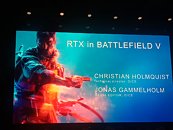
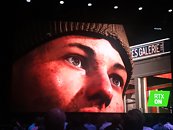
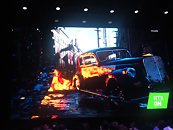
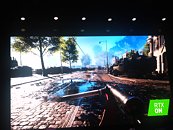
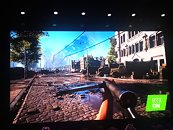
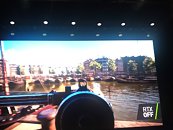
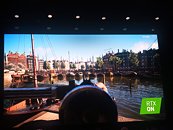
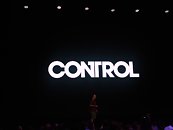
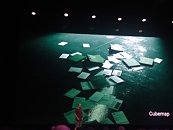
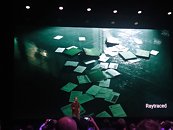
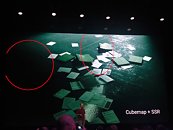
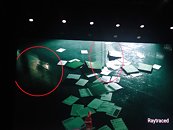
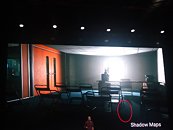
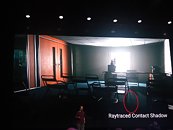
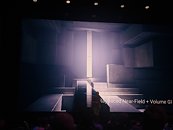
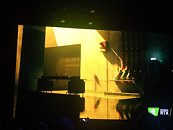
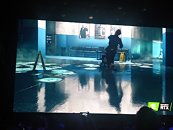
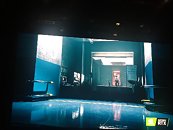
24 Comments on Games With NVIDIA RTX, Part 1: Battlefield V, Control
What this causes is that games running on RTX cards will now intentionally look worse because NVIDIA will deseprately try to push this thing and make regular graphics look more plain. I've seen amazing soft shadows, amazing floor reflections that were super realistic. All this will be gone because they'll have this need to very strictly differentiate RTX from regular graphics. They'll give devs incentive not to make reflections for non-RTX cards as fancy even though they could do it.
I've been bitching about this for a long time when NVIDIA was showcasing glass shattering with PhysX in Mirror's Edge (2009). With Physics you get this nice breaking of glass into many pieces that fall on the ground and stay there. Turn HW PhysX off and suddenly, glass shatters and disappears into nothingness before it even hits the ground. Now, if I was that casual normie who can't spot low framerate, I'd think wow, PhysX is amazing. Except, I've played Red Faction back in 2001. Game running physics entirely on weak ass CPU's from that period, single cores at 1.5GHz or so. Glass shattering in hundreds of pieces depending on where you hit it, explosions blow it out of frames in correct direction and shards stay on the ground. And that wasn't an isolated case. They are doing this in Watch_Dogs too and many other games. And I think it's a disgusting way to promote your proprietary effects because you're gimping what we already had for years to make your current tech look more exciting. It is exciting, but if things were done right, not as much as they make it to be.
So what if effects are faked, if they are faked so well 99% of people can't tell a difference, who bloody cares? When we'll have 100% ray tracing, we won't even care anymore, but at this moment, faking things for faster operation is just more efficient. Ray tracing is literally brute force compute. When you're doing it, there are no shortcuts or optimizations. Light is what it is. You can't fake it or optimize it. Except limit the number of light bounces.
How performance runs only will tell as time comes and software and HW is improved.
I am sure you be able to turn it off as in BF5 it was turned off in alpha, we will see what happens moving forward.
They're required for developers, if RTX is to ever take off, but as a gamer there's just too many unknowns at this time.
NVIDIA has some post processing color/sharpness/tone stuff with NVIDIA Experience, but it doesn't support a single game I tried so that's crap.
its going to be really interesting to see the performance deficit...:toast:
You need 8K ti notice details like that from more than 1 foot away. My god this is hilariously stupid.
"Digital Foundry’s John Linneman, however, also reassured fans in a series of posts published on the ResetEra board. He saw the demos and was able to confirm that DICE, for instance, only had a couple weeks of time to implement their Ray Traced Reflections in Battlefield V."
Extract from wccftech.
Doesn't scream , great outcome to me, you would think Rtx was just imagineered or something, I thought Ea had been in the loop a while.?
Try this one where they actually tell you the RTX process from Nvidia themselves (Tom Petersen)
and i can imagine how my eyes get grilled with this and hdr on.
or maybe these pics dont serve the purpose well